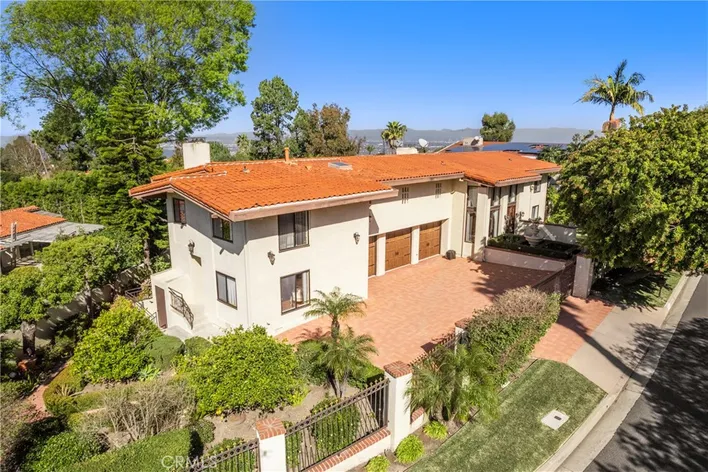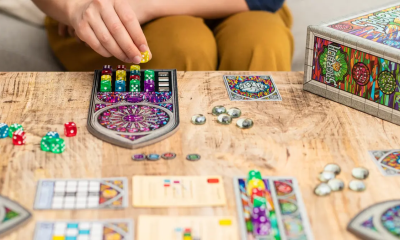Press Release
Here’s How To Get To Palos Verdes From Chula Vista

The Palos Verdes Peninsula is a beautiful stretch of land that separates the Pacific Ocean from the Los Angeles Bay, and it’s been described as “a place where you can see the earth end”. But getting there is not always easy. Fortunately, there’s a map!
By Train ,bus
6h 29m
includes 2h 10m transfer
₹ 2,828 – ₹ 4,175
Line Bus
Line 929 bus, bus, line 344 bus
7h 10m
includes 1h 43m transfer
Drive
from Chula Vista to Palos Verdes Estates
2h 20m Approximate fuel cost: ₹ 950 – ₹ 1,500
Distance :-210 KM
How to Get from Chula Vista to Palos Verdes
There are a few different ways to get from Chula Vista to Palos Verdes, depending on what mode of transportation you’re using. If you’re driving, the easiest way is to take I-5 North to the San Diego-Coronado Bridge. Once you’re across the bridge, follow signs for Silver Strand Boulevard/CA-75 North. This will take you right into Palos Verdes.
If you’re taking public transportation, you can take the bus from Chula Vista to San Diego, and then transfer to the Los Angeles Metro Rail Green Line. Get off at the Harbor Freeway station and transfer to the Silver Line bus. This bus will take you right into Palos Verdes.
Finally, if you’re looking for a more scenic route, you can take the ferry from Chula Vista to Coronado Island, and then walk or bike across the San Diego-Coronado Bridge into Palos Verdes.
What’s the Commute?
The commute from Chula Vista to Palos Verdes can be a bit of a challenge, but it’s definitely doable. Here are a few tips to make the trip a little easier:
1. Carpool or take public transit whenever possible. This will help reduce traffic and save you money on gas.
2. Plan your route in advance and allow extra time for traffic. Los Angeles is notorious for its traffic, so it’s best to be prepared.
3. Make sure your vehicle is in good condition before making the drive. This includes having enough gas, proper tires, and working headlights.
4. Be aware of the weather conditions before heading out. If it’s raining, be sure to drive cautiously and allow extra time for your commute.
5. Allow yourself plenty of time to relax when you finally arrive at your destination. After all, you deserve it after making it through the commute!
What’s the Weather Like in Palos Verdes?
If you’re planning a trip to Palos Verdes, you’ll want to know what the weather is like before you go. The average temperature in Palos Verdes is 70 degrees Fahrenheit, with highs of 75 degrees and lows of 65 degrees. The area experiences very little rainfall, so you can expect sunny skies during your visit.
Who Lives In Palos Verdes?
There’s no doubt that Palos Verdes is a beautiful and special place to live. But who exactly calls Palos Verdes home?
According to the 2010 census, the population of Palos Verdes is just over 13,000. The median age is 46 years old, and the median household income is over $200,000. Not surprisingly, the majority of residents (85%) are white. Other demographics include 5% Asian, 4% Latino, and 3% African American.
But it’s not just the wealthy and the retirees who live in Palos Verdes. There is a large community of families with young children who call Palos Verdes home. In fact, nearly 30% of the population is under the age of 18. And with good reason – Palos Verdes is an amazing place to raise a family.
The schools in Palos Verdes are some of the best in the state, and there are plenty of activities and amenities for families to enjoy. From the world-famous Trump Natio
nal Golf Club to the beautiful beaches and hiking trails, there’s something for everyone in Palos Verdes.
Schools Nearby
If you’re looking for a great school district, Palos Verdes is the place to be. With top-rated schools and a variety of programs to choose from, your child is sure to get a great education. And, with Chula Vista just a short drive away, you can easily access all the resources and amenities the city has to offer.
Press Release
Sang Sultantoto

If you’re trying to find Moenime Then, this is where you can locate several sources that provide in-depth information.
BANDAR TOGEL – TOGEL ONLINE HONGKONG, SULTANTOTO
To those who play togel, particularly those who play togel in Hong Kong, this statement applies: TOGEL ONLINE INDONESIA & BANDAR TOGEL HONGKONG. Togel is a very popular game in Indonesia and is played frequently. SULTANTOTO was established to give you the time and space to play Hong Kong togel and handle payments.
https://sangsultan.asia/
BANDAR TOGEL – TOGEL ONLINE HONGKONG, SULTANTOTO
Sultantoto bandar SGP, which emerged in recent years and now serves as a togel marketplace for all Indonesian online togel players, makes it easier for players to engage in togel play wherever they may be.
https://sangsultan.asia/wap
Bandar Togel Online Direkturtoto Penyedia DIREKTUR TOTO
Link Alternate: https://rebrand.ly/direkturtoto01 | https://rebrand.ly/direkturtoto02 | Bandar Togel Singapore dan Togel Hongkong Versi Togel WAP
https://sangdirektur.co/wap/permainan/play.html?
loc=gvszgvt7
I hope the materials mentioned above are useful in providing you with knowledge about sung sultantoto. If not, you can contact me through the comments.
Press Release
Critical GitLab flaw permits account takeover by attackers

GitLab has patched a critical severity flaw that may have let remote attackers exploit hardcoded passwords to seize control of user accounts.
Both the Community Edition (CE) and Enterprise Edition of GitLab are impacted by the flaw, which was identified internally and is designated CVE-2022-1162 (EE).
During OmniAuth-based registration in GitLab CE/EE, static passwords were unintentionally set, which led to this vulnerability.
In a security advisory released on Thursday, the GitLab team stated that “a hardcoded password was set for accounts registered using an OmniAuth provider (e.g. OAuth, LDAP, SAML) in GitLab CE/EE versions 14.7 prior to 14.7.7, 14.8 prior to 14.8.5, and 14.9 prior to 14.9.2 allowing attackers to potentially take over accounts.”
In order to thwart such assaults, GitLab strongly advised users to update all GitLab installations right away to the most recent versions (14.9.2, 14.8.5, or 14.7.7).
We STRONGLY RECOMMEND UPGRADING TO THE LATEST VERSION AS SOON AS POSSIBLE FOR ALL INSTALLATIONS RUNNING A VERSION AFFECTED BY THE ISSUES DESCRIB
A code patch made two days ago reveals that GitLab removed the ‘lib/gitlab/password.rb’ file, which was used to give the ‘TEST DEFAULT’ constant a shoddy hardcoded password.
Some GitLab users had their passwords reset.
GitLab also stated that as part of the CVE-2022-1162 mitigation effort, it reset a select few GitLab.com users’ passwords.
Additionally, it did not discover any proof that any accounts had been compromised by hackers exploiting the hardcoded password security weakness.
As of 15:38 UTC, “We completed a reset of GitLab.com passwords for a chosen selection of users,” the GitLab staff stated.
Although there is no evidence to suggest that users’ or accounts’ security has been compromised, we are nonetheless taking precautions for our users’ safety.
A GitLab representative provided the information already included in the advisory with BleepingComputer when asked how many Gitlab.com users had their passwords reset, adding that they only did it for “a selected set of people.”
A programme to recognise affected user accounts
GitLab has developed a script that self-managed instance administrators can use to find user accounts that might be affected by CVE-2022-1162, despite the fact that the firm claims no user accounts have been compromised so far.
Administrators are urged to reset the users’ passwords after identifying any user accounts that might have been impacted.
GitLab claims that over 100,000 businesses utilise its DevOps platform, and it has over 30 million estimated registered users from 66 different nations.
Press Release
CCPA NEEDS STRONGER ENFORCEMENT, BUT “AUTHORIZED AGENTS” LIKE DONOTPAY CAN MAKE IT EASIER FOR CONSUMERS TO OPT OUT OF DATA COLLECTION (KAVEH WADDELL/CONSUMER REPORTS).

Understanding the five major aspects of HRM — Employees are not just part of your organization, they are your organization. To keep your business running smoothly, employees have to be managed efficiently and their needs have to be catered to.
-

 Apps1 year ago
Apps1 year agoWhy is Everyone Talking About Hindi Keyboards?
-

 Social Media1 year ago
Social Media1 year agoWho is Rouba Saadeh?
-

 Apps1 year ago
Apps1 year agoThings you need to know about Marathi keyboard today
-

 Apps1 year ago
Apps1 year agoStuck with Your default Bangla keyboard? Isn’t it time for a change?
-

 Social Media1 year ago
Social Media1 year agoMati Marroni Instagram Wiki (Model’s Age, Net Worth, Body Measurements, Marriage)
-

 Entertainment1 year ago
Entertainment1 year ago12 Online Streaming Sites that Serve as Best Alternatives to CouchTuner
-

 Games11 months ago
Games11 months agoTop 7 Popular Puzzle and Card Games for Relaxing Your Brain on Mobile, Featuring Solitaire
-

 Entertainment1 year ago
Entertainment1 year agoMovierulz Website: Movierulzz 2021 Latest Movies on Movierulz.com
